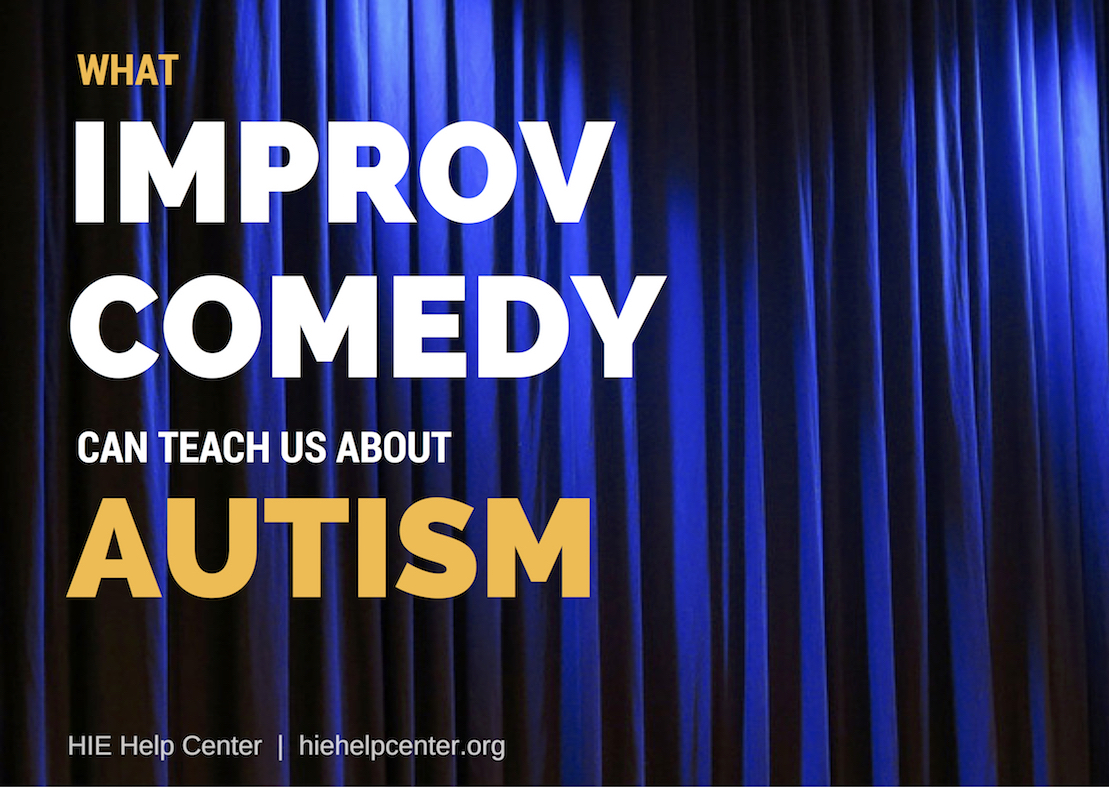Second City is a prolific improvisational comedy organization, known for churning out highly-successful comedians like Bill Murray, Tina Fey, Amy Poehler, and Stephen Colbert. In addition to launching careers and creating a lot of laughs, they also do important work to help people with communication difficulties and mental health issues. Their improv classes for anxiety were designed specifically to help people overcome social fears and become more confident. For some participants, these classes may spark an interest in performance improv. For others, it may simply help them feel more comfortable with situations such as presenting a project at work.
Based in part on the success of their anxiety programming, The Second City also started teaching classes designed specifically for people with autism spectrum disorder, or ASD (1). In addition to social anxiety, people with ASD may communicate using repetitive language, and struggle with situations in which they can’t rely on conversational “rules.” They may also have difficulty making eye contact, understanding nonverbal communication, and clearly expressing their emotions (2). Although additional research into the therapeutic value of improv for people with ASD is needed, preliminary studies and anecdotal evidence suggests that it can help with these issues (3, 4).
“Yes, and…”
Some professionals believe that one of the most useful concepts from improv for children with autism is called “Yes, and…”. There is even a camp named after this idea, which works with both teens on the autism spectrum and educators. “Yes, and…” encourages participants to:
- Accept what others in their group have just done/said, and
- Try to build off of that
For example, if one student says “Did you eat lunch today?” their classmate might say, “Yes, and it was horrible.” At a more advanced level, the “Yes, and…” rule can be interpreted less literally. It simply means that one should respond with something that makes sense given the flow of the conversation. To the question about lunch, for example, you might say “No, I haven’t had time to eat!” but you wouldn’t say “I need to do my homework.”
Benefits for people with autism
Following the “Yes, and…” rule can help those on the autism spectrum to better follow communication conventions and participate in two-way conversations. NPR’s Peter Balonon-Rosen noted that the idea of using improv to teach social skills is “pretty straightforward.” He continued, “If children improvise different situations, think about their emotions and how they show them, then they’ll be able to communicate more clearly in life” (4).
Related Reading
- New Research Links Birth Complications to Increased Autism Risk
- Tips for Helping Children with Sensory Processing Issues Get Dressed
- Sensory Integration Therapy
Sources
- Huffington Post: Teens With Autism Stretch, Grow And Laugh In Improv Classes At Second City
- NIH: Autism Spectrum Disorder: Communication Problems in Children
- Disability Scoop: For Those With ASD, Improv Classes Can Aid Communication
- NPR: Using Improv To Help Kids With Autism Show And Read Emotion



Leave a Reply
You must be logged in to post a comment.